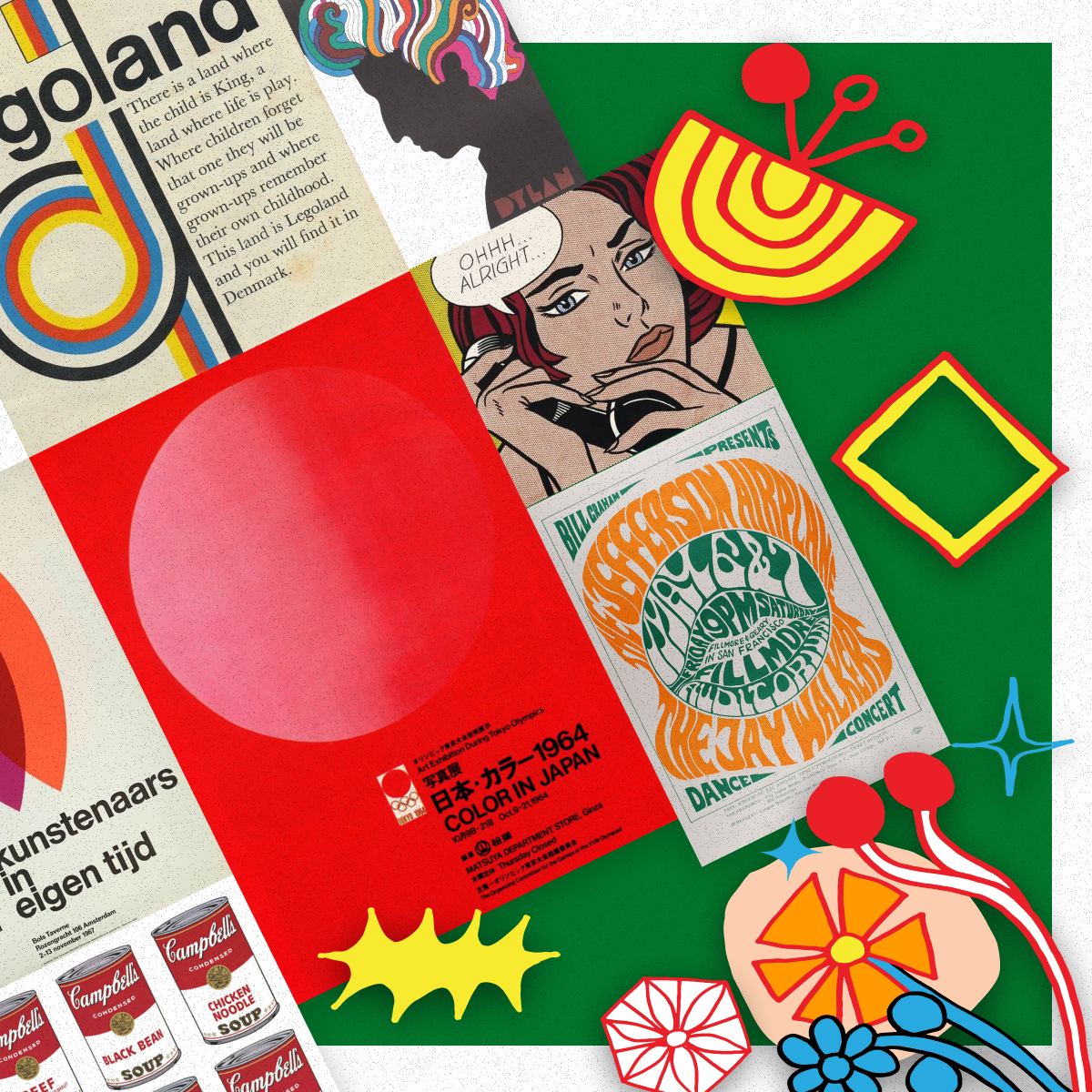
The 1960s was a transformative decade, not just in terms of societal shifts and political upheavals, but also in the realm of graphic design.
Emerging from the optimism of the 1950s, the 1960s were marked by a growing disillusionment as well as a passion for expression through the arts. The artists, designers, and musicians of this era embarked on a journey to challenge the status quo, embrace rebellion, and take culture and art in bold new directions.
The 60s introduced a plethora of new movements, reinvigorated older ones, and served as the cradle for the burgeoning counterculture in design.
In this blog post, we will unravel the tapestry of graphic design in the 60s — including its defining features and influential movements — and draw out lessons that today’s aspiring designers can use to inject fresh inspiration into their work.
5 1960s graphic design trends
Graphic design in the 60s was a kaleidoscope of colors, patterns, and innovative typography. Let’s delve into some of the most prominent trends of the era.
1. Psychedelic Art
This style is renowned for its vivid colors, groovy lines, curvilinear shapes, and dynamic text effects, creating a sense of perpetual motion. A classic example of psychedelic art that has permeated the collective consciousness is The Beatles’ “Yellow Submarine” album cover.

2. Pop Art
The Pop Art movement blurred the boundaries between high art and popular culture, often featuring collages of everyday objects — like Andy Warhol’s “Campbell’s Soup Cans.”
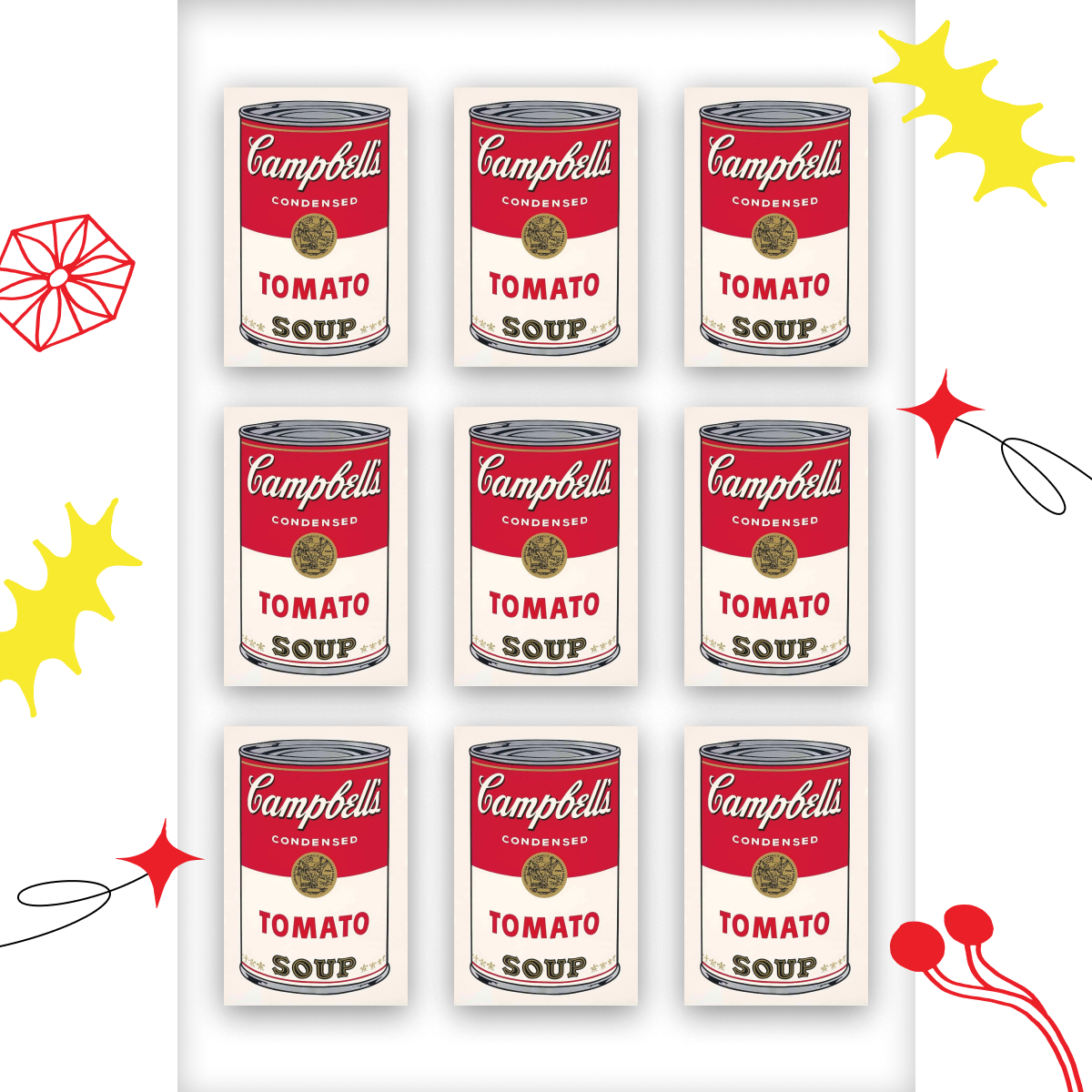
3. Op Art
Characterized by abstract patterns and vibrant color schemes, Optical Art creates optical illusions that play with the viewer’s perception. Bridget Riley spearheaded the Op Art movement, with her works such as “Movement in Squares” — which one early critic described as “anxiety” — becoming synonymous with this trend.
4. Minimalism
This movement was a response to consumer culture, focusing on simplicity and the power of negative space. Artists such as Massimo Vignelli — with his famous New York Subway Map — exemplify the 1960s minimalist trend.
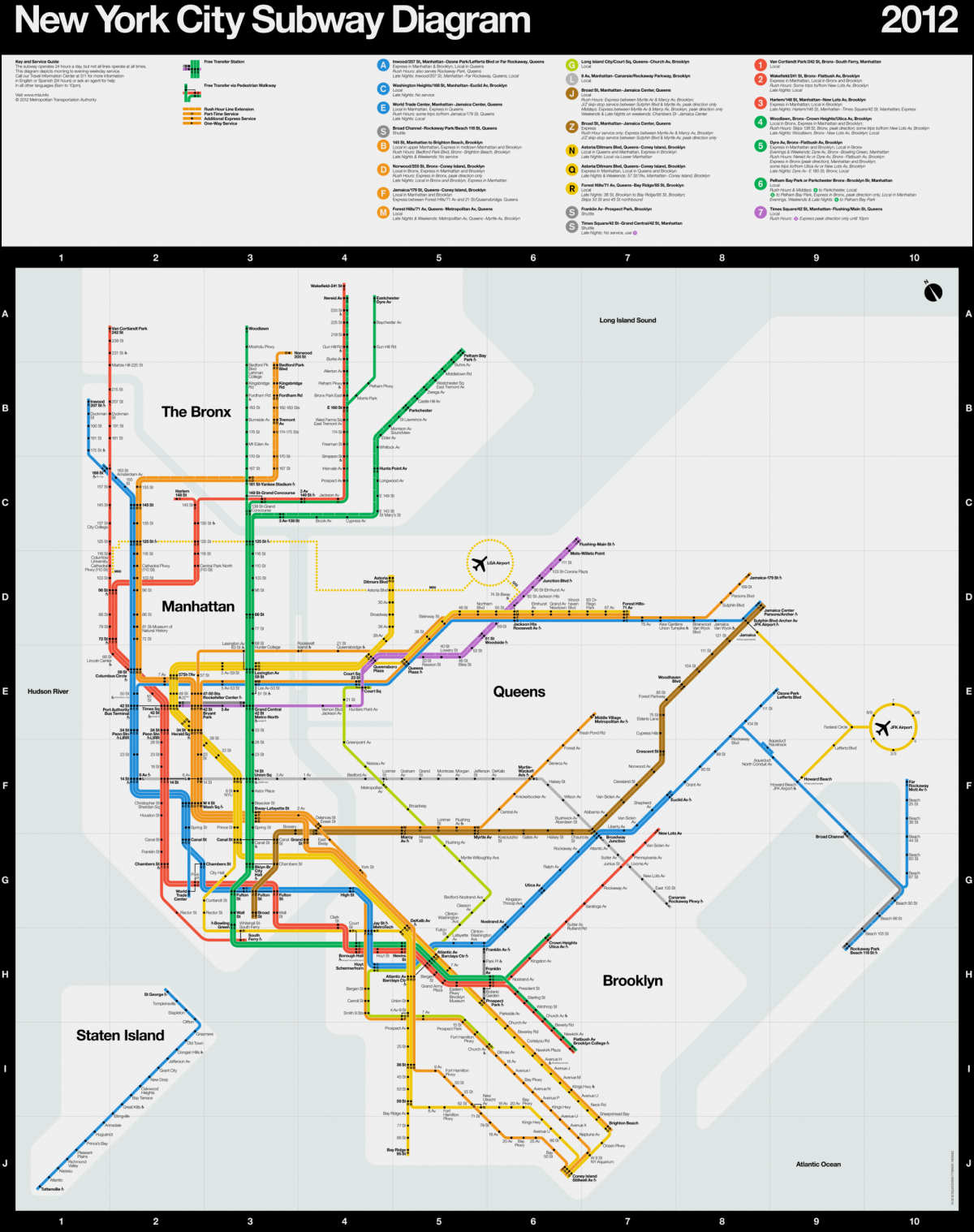
5. Conceptual art
Prioritizing ideas over visual aesthetics, Conceptual Art encourages viewers to engage with the underlying message of a piece — such as Sol LeWitt’s famous wall drawings.
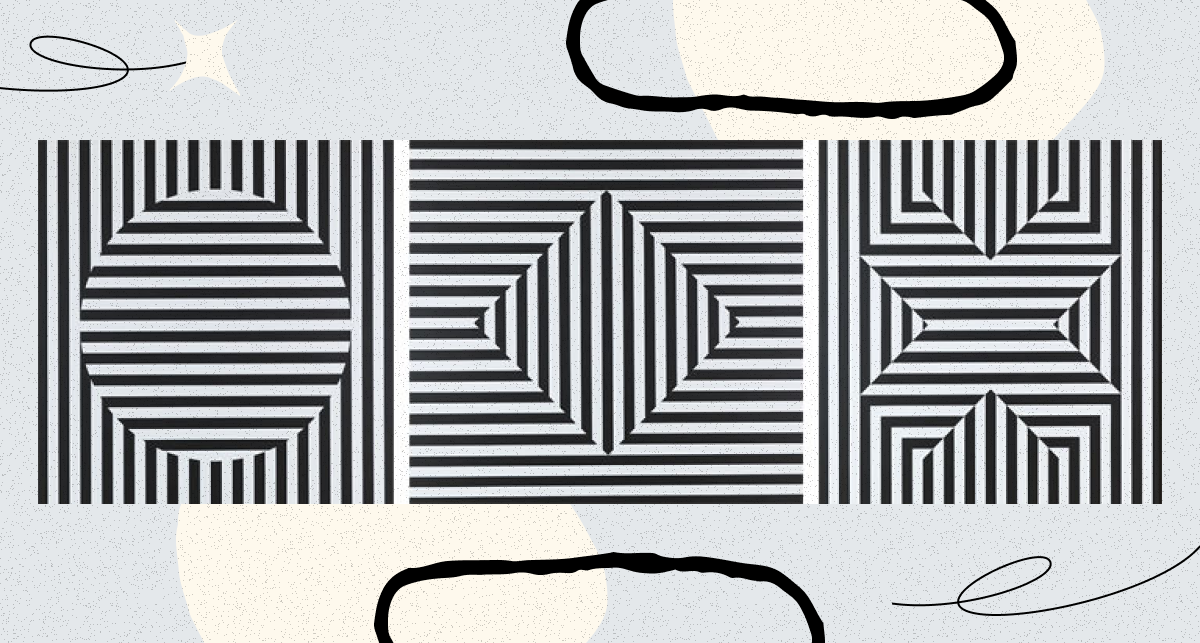
Major influences on graphic design in the 60s
The graphic design trends of the 60s did not evolve in a vacuum — they were a reflection of the era’s tumultuous socio-political climate and cultural revolutions, including:
Sociopolitical climate
The Vietnam War, Civil Rights Movement, and youth rebellion all played pivotal roles in shaping the era’s design landscape. Throughout the late 1960s, large-scale anti-war protests took place in cities across the US, including New York, Washington DC, and San Francisco.
The anti-war movement was closely associated with the Civil Rights Movement, with Reverend Martin Luther King giving a speech at the April 15, 1967 protest in Central Park.
Psychedelic movement
The popularity of hallucinatory drugs such as LSD led to a distortion of perceptions, vividly reflected in the era’s concert posters and album covers.
The psychedelic movement was closely linked to the hippie counterculture, and psychedelic art invited viewers not just to passively view art but to actively experience it.
Youth rebellion
The younger generation’s questioning of societal norms spurred movements advocating for equality and freedom, which were visually represented in graphic design.
These movements were led by some of the most influential people of the time, such as John Lennon, whose rebellious nature and astronomical fame provided a unique platform for social commentary on everything from war to capitalism, women’s rights, racism, and equality.
Pop culture
Music, fashion, art, and literature in the 60s heavily influenced one another, with psychedelic and vibrant styles dominating the scene.
Counterculture revolutions
Movements aiming to create a more egalitarian society were visually represented through bold, rebellious designs. The counterculture phenomenon was a rejection of social norms and structural problems such as racism and social injustice.
Counterculture youth — aka hippies — rebelled against the traditional family unit and sexual norms and opposed the Vietnam War, and their penchant for mind-altering drugs influenced the design aesthetics of the time.
5 famous graphic design artists from the 1960s
The 60s were a breeding ground for influential artists who left an indelible mark on the world of graphic design, with many of the styles pioneered during this era still influencing the design choices of today. Here are five of the most well-known:
1. Wes Wilson
Known for his psychedelic lettering that seemed to pulse and flow, Wilson’s style encapsulated the spirit of the 60s.
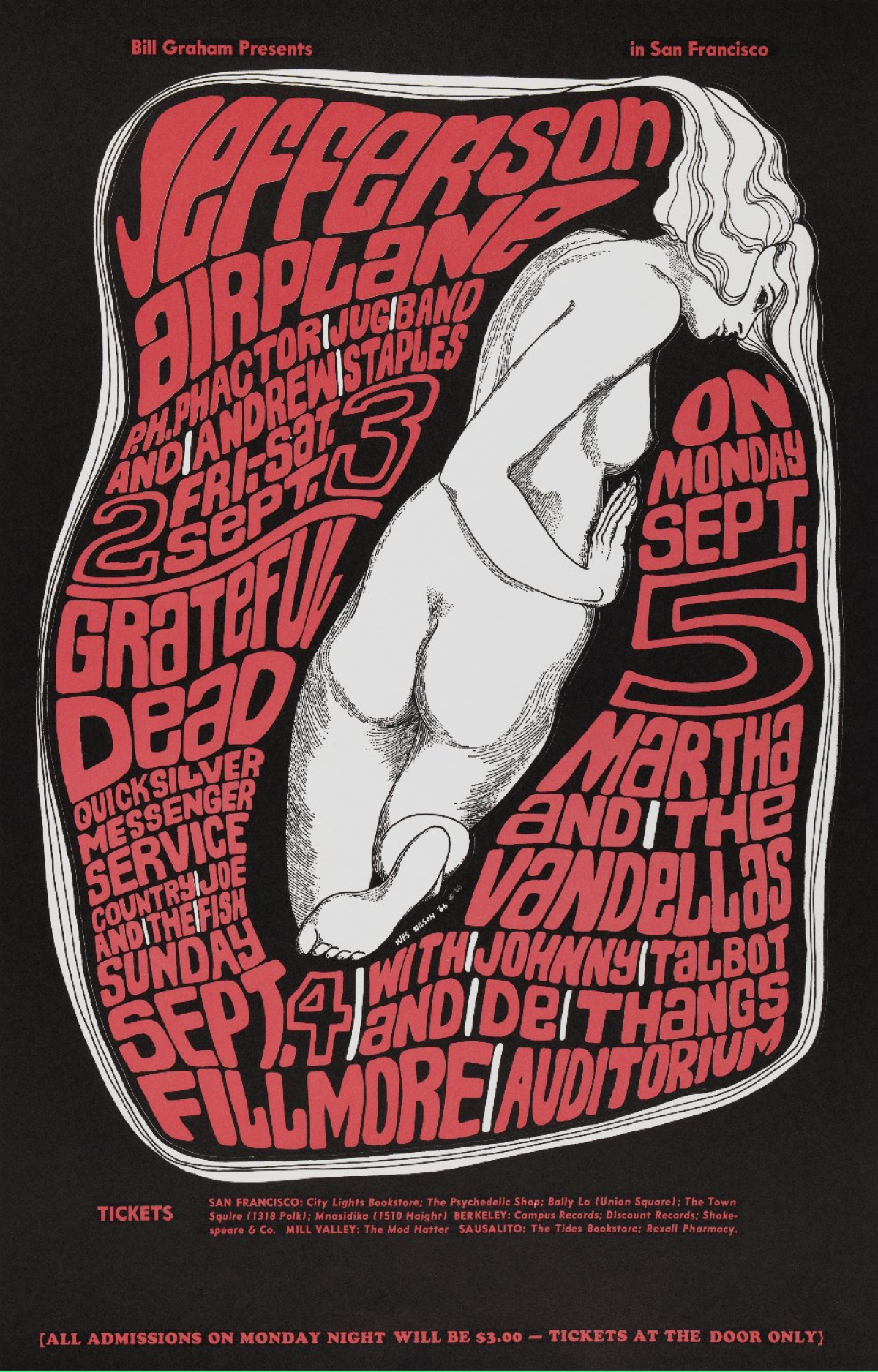
2. Victor Moscoso
Moscoso’s use of neon color schemes and intense imagery set a new standard for poster design.
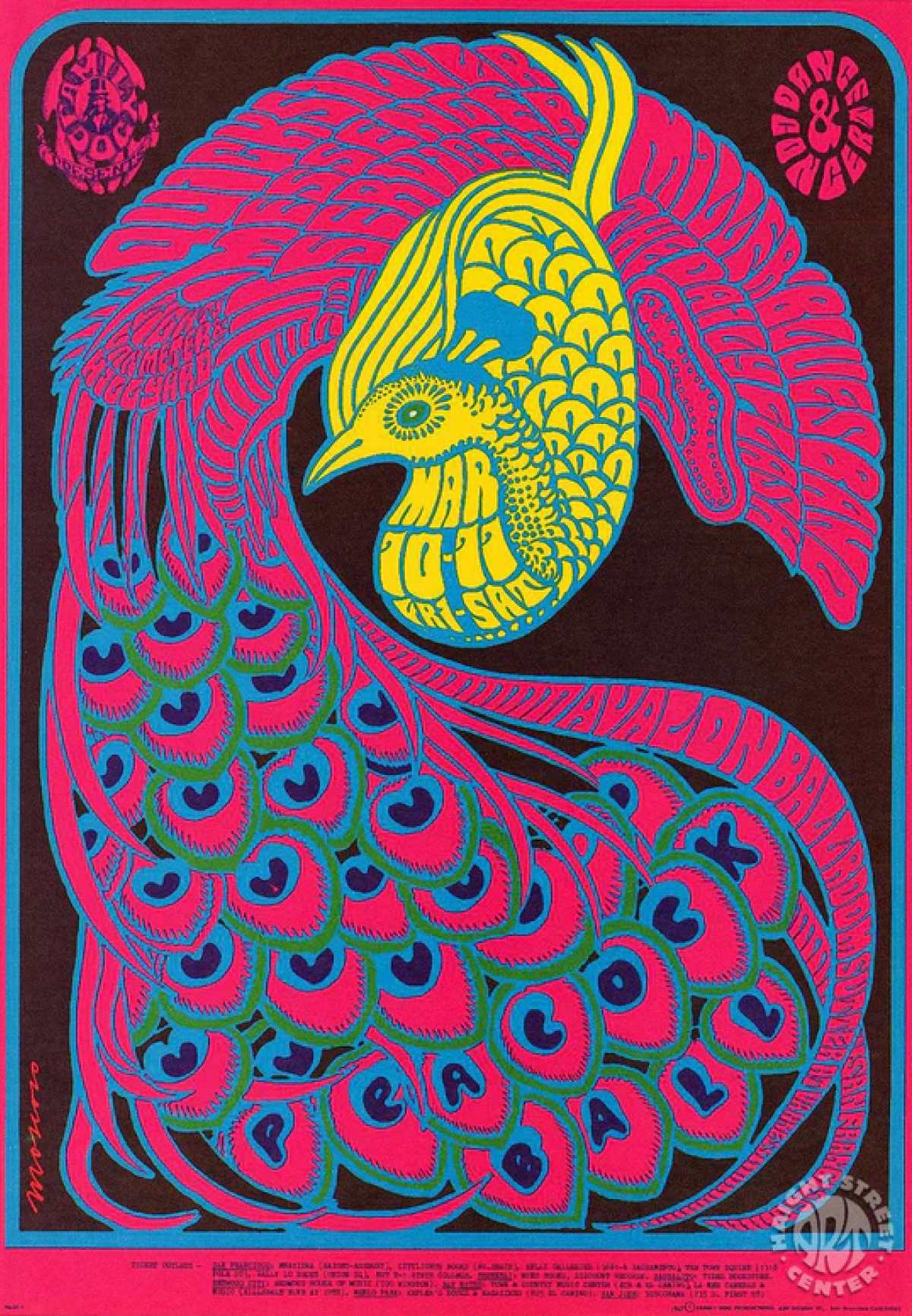
3. Roy Lichtenstein
Lichtenstein’s comic book-inspired designs, complete with dot stencils and bold colors, became iconic.
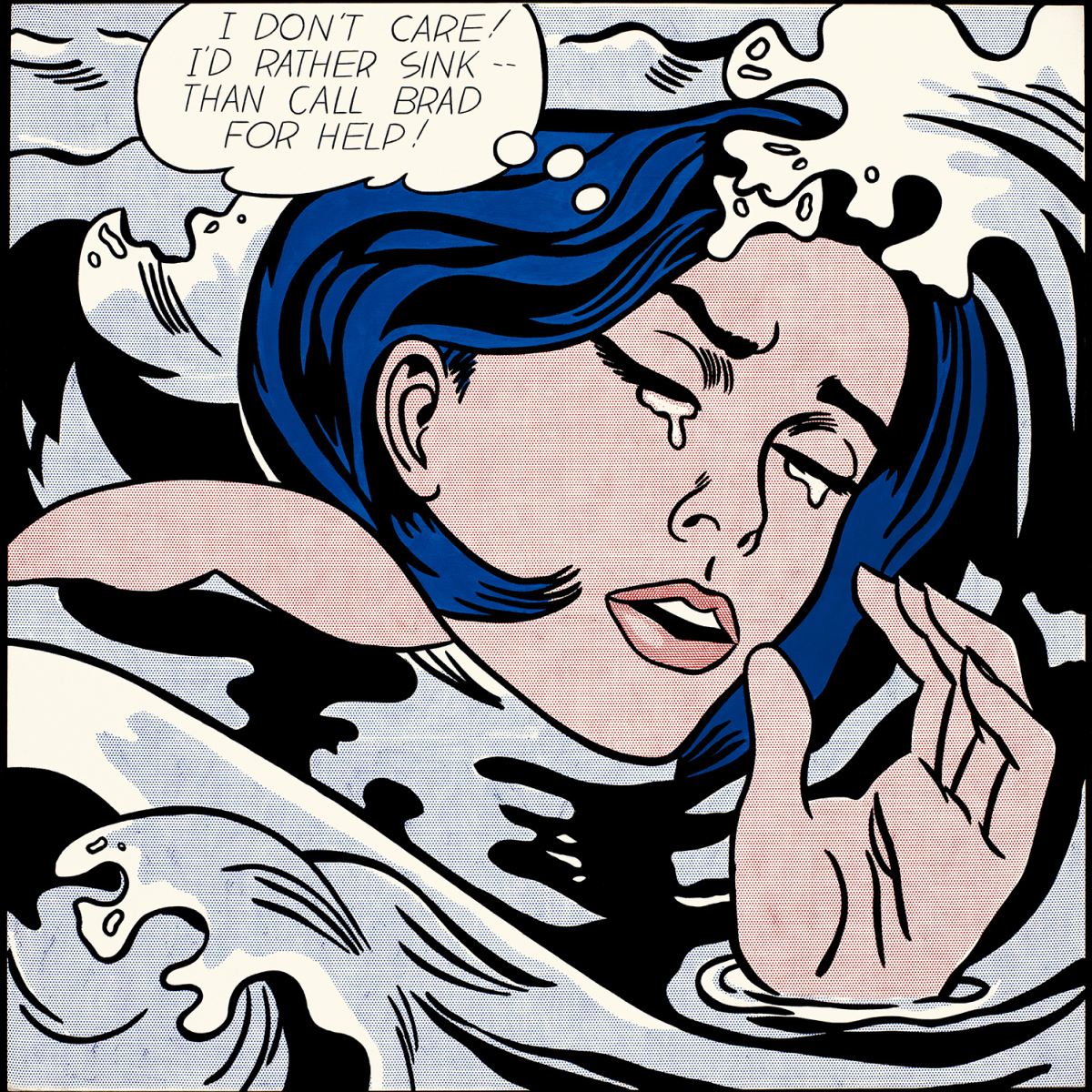
4. Andy Warhol
Warhol’s unique approach, merging fine art with popular culture, made him one of the most influential artists of the era.
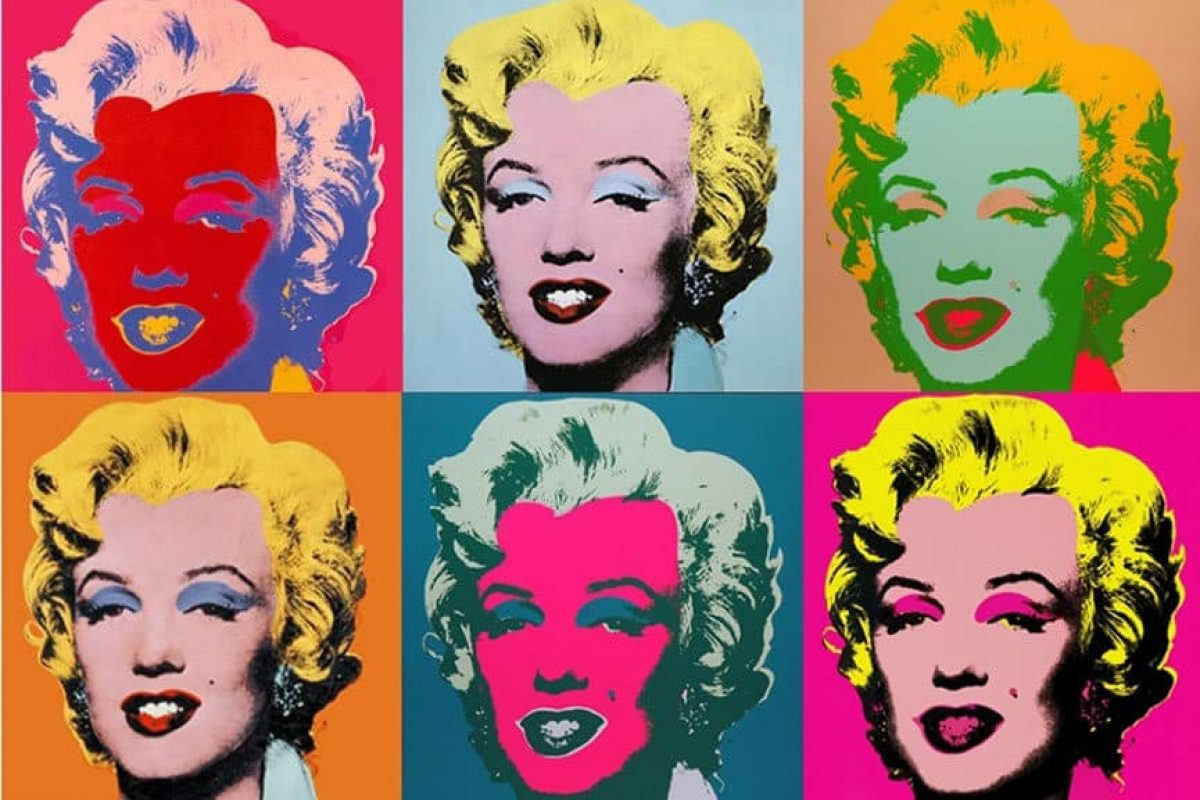
5. Keiichi Tanaami
Tanaami’s work, spanning animation to editorial design, was both vibrant and varied.
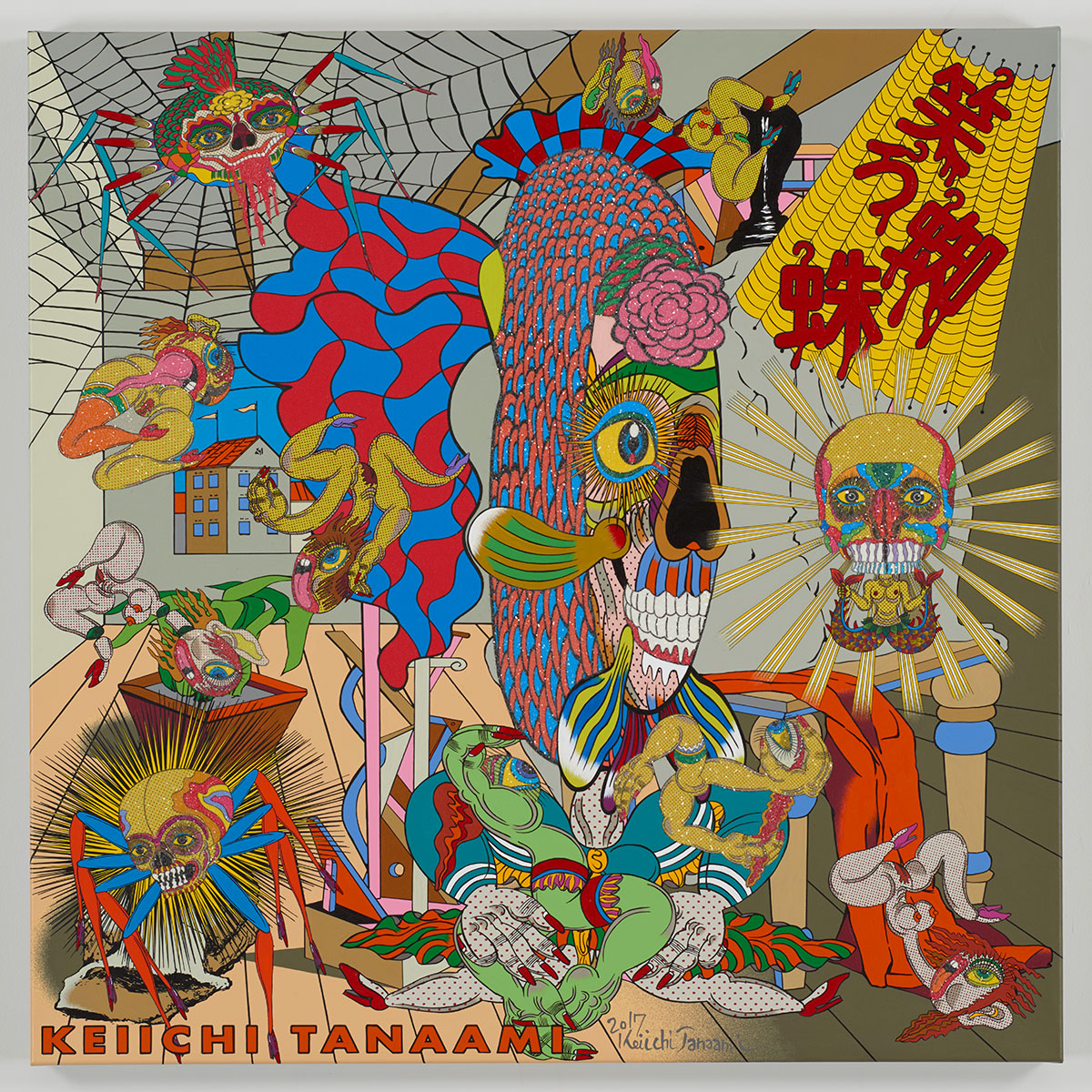
How does graphic design in the 60s influence graphic design in 2023?
The legacy of the 60s lives on in contemporary graphic design, with many designers still drawing inspiration from this revolutionary era. For instance, modern designers frequently borrow elements from 60s graphic design, such as geometric shapes, abstract patterns, and psychedelic typography.
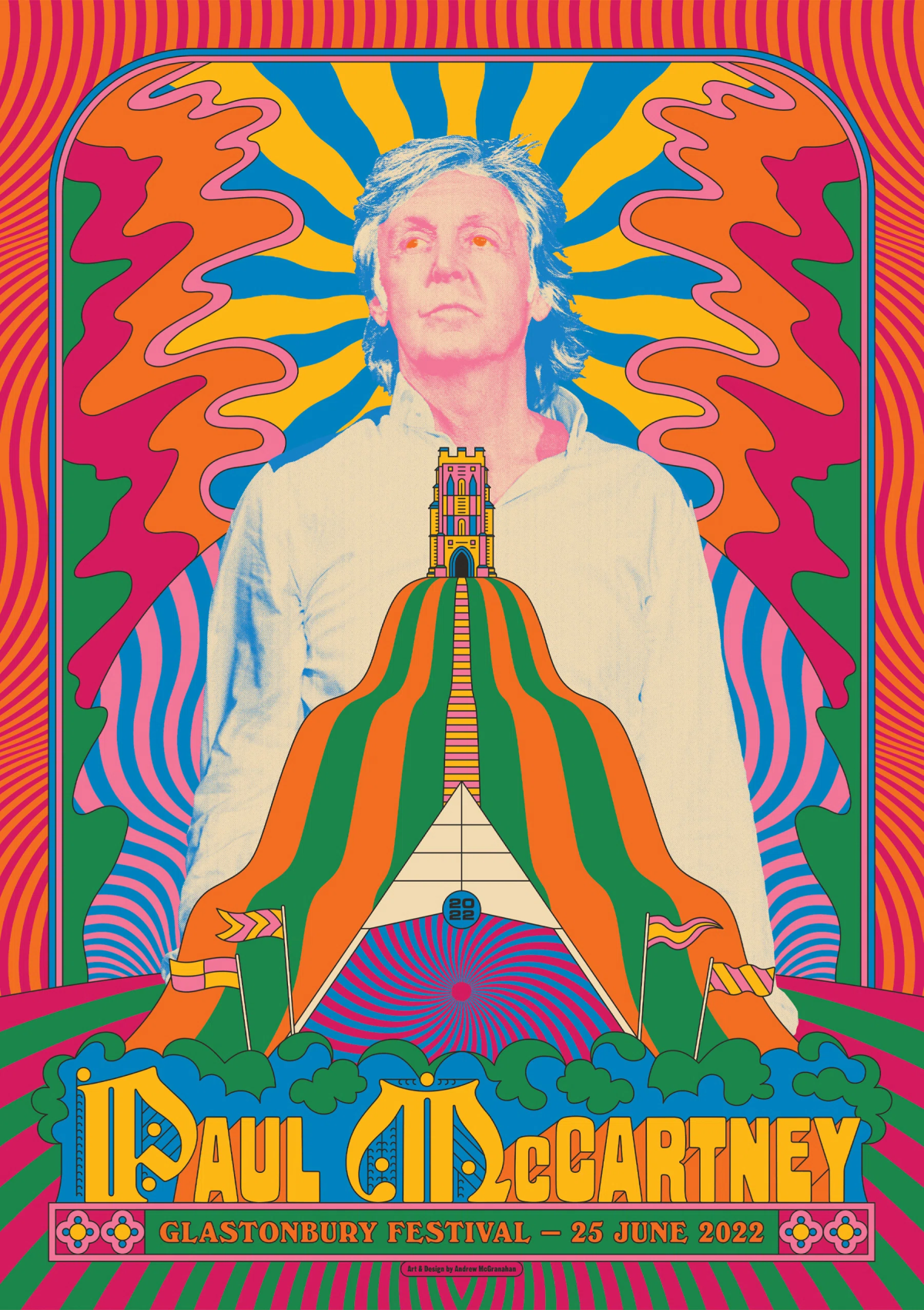
Similarly, the legacy of pop art’s ironic commentary on consumer culture that defined the 60s lives on in today’s designs, as do the mesmerizing patterns and optical illusions of Op Art.
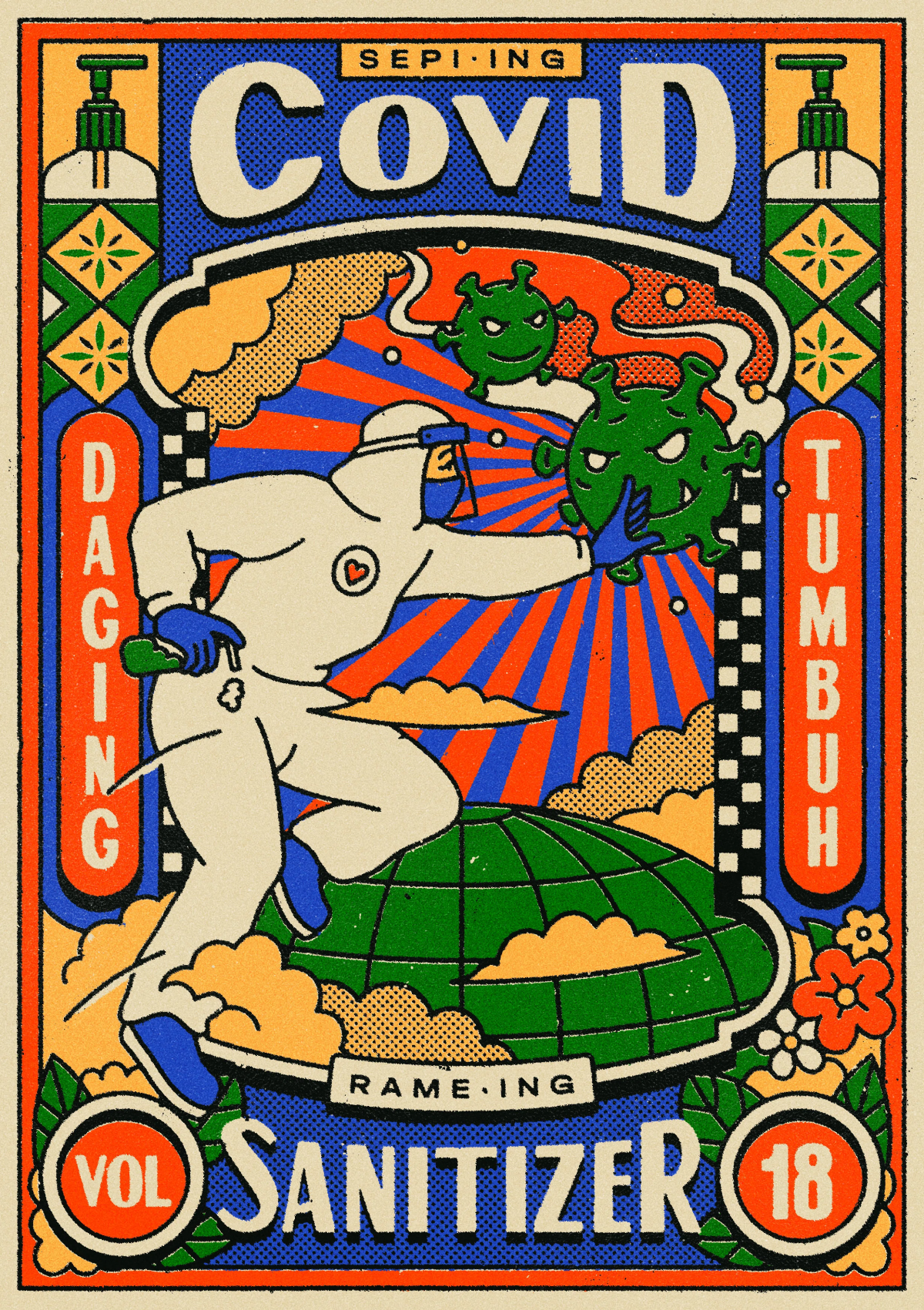
Incorporating these elements into your designs is a great way to give them a flavor that’s both fresh and nostalgic.
What graphic designers can learn from 1960s design
The 1960s offer timeless lessons for today’s aspiring designers, encouraging boldness, innovation, and a deep connection to the cultural zeitgeist. Here are some suggestions for experimenting with 1960s design elements in your work:
Embrace neon and vibrant colors: Don’t be afraid to be bold and visible.
Incorporate psychedelic typography: Experiment with dynamic and flowing text.
Optical illusions: Use patterns and colors to create eye-catching visual effects.
Mixed media collages: Mix different media to evoke nostalgia and capture attention.
Conceptual design: Focus on the underlying message and idea of your designs.
Unleash your creativity and ignite your design journey with the bold spirit of the 60s
As we reflect on the vibrant and eclectic world of 60s graphic design, it’s clear that this era offers a treasure trove of inspiration for today’s designers. From the bold colors and psychedelic designs to the deep connection with cultural movements, there is much to learn and apply to contemporary design projects.
You can get some inspiration for your portfolio's overall look by using our design templates — useful for artists and designers just like you learn, grow, and inspire one another.

